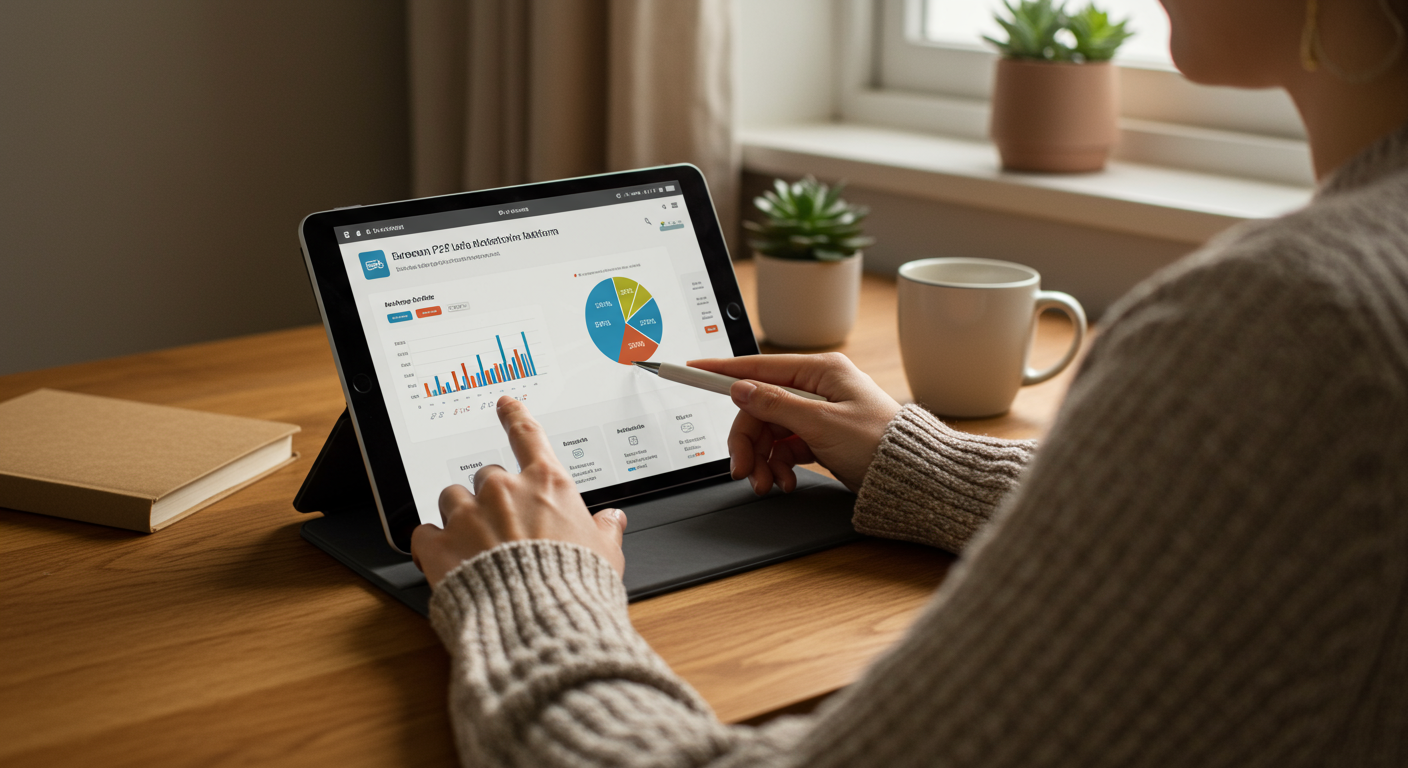Are you a European investor looking to generate passive income? P2P lending offers a compelling opportunity, and with auto-investing, it's easier than ever to get started. This guide provides a clear, step-by-step approach to using auto-investing features on P2P platforms, helping you build your income with minimal effort.

Why Auto-Investing Matters for European P2P Investors
Auto-investing simplifies the P2P lending process, making it accessible for beginners. It automates the loan selection and investment process, freeing up your time and helping you to build a diversified portfolio more efficiently. For European investors, this means a streamlined path to passive income, while still adhering to regulations like GDPR and MiFID II.
Getting Started: What You Need to Know
Before diving into auto-investing, it's crucial to understand the basics of P2P lending. Essentially, you're lending money to borrowers through an online platform. In return, you earn interest on your investment. Key concepts include:
- Interest Rates: The percentage you earn on your investment.
- Loan Terms: The duration of the loan.
- Risk Assessment: Understanding the risks associated with lending, such as borrower default.
- Diversification: Spreading your investments across multiple loans to reduce risk.
Step-by-Step Process
Here's how to set up auto-investing on a typical European P2P platform:
- Choose a Platform: Select a platform with a user-friendly auto-investing feature. Consider factors like interest rates, loan types, and platform reputation.
- Create an Account: Sign up for an account, providing the necessary personal and financial information. Ensure the platform complies with EU regulations.
- Deposit Funds: Transfer funds to your account using SEPA transfer or other accepted methods. For example, you might start with €100 to test the waters.
- Navigate to Auto-Invest: Locate the auto-investing settings or feature on the platform.
- Define Your Criteria: This is where you set your investment parameters. Consider these factors:
- Loan Amount: The maximum amount you'll invest in each loan (e.g., €10 to €50).
- Interest Rate: The minimum interest rate you're willing to accept.
- Loan Term: The desired loan duration (e.g., 12-36 months).
- Loan Type: The type of loans you want to invest in (e.g., consumer loans, business loans).
- Risk Level: Some platforms allow you to choose risk levels.
- Review and Activate: Double-check your settings and activate the auto-investing feature. The platform will now automatically invest your funds based on your criteria.
- Monitor Your Portfolio: Regularly check your portfolio's performance. Review your settings periodically and adjust them as needed.
Your First €100: What to Expect
Let's say you invest €100 and set up auto-investing. Based on an average interest rate of 10% per year, you could earn approximately €10 annually (before taxes). This is a simplified example. The actual return will depend on the platform, the loans you invest in, and the loan terms.
- Diversification: Auto-investing will automatically spread your €100 across multiple loans, reducing your risk.
- Compounding: As your loans are repaid, the platform will reinvest the principal and interest, allowing your investment to grow over time.
- Risk Management: Be aware of the risks associated with P2P lending, such as borrower default. Choose platforms with a strong track record and consider diversifying across different platforms.
Common Beginner Questions
- Is P2P lending safe? P2P lending involves risks, but platforms often have measures in place to mitigate them, such as credit scoring and buyback guarantees. Always do your research and understand the risks before investing.
- How much can I earn? Returns vary, but P2P lending often offers higher interest rates than traditional savings accounts. Be realistic about your expectations, and remember that higher returns usually come with higher risk.
- What if a borrower defaults? Platforms often have mechanisms to recover funds, such as debt collection. Some platforms also offer buyback guarantees, where they repurchase the loan if the borrower defaults.
European Investor Advantages
European investors benefit from several advantages:
- Regulatory Framework: The EU has established regulations to protect investors, such as MiFID II, which promotes transparency and investor protection.
- Currency: Investing in EUR simplifies your financial planning.
- Market Access: Access to a wide range of P2P platforms catering to European borrowers and investors.
- Diversification: The ability to diversify your portfolio across various loan types and geographies within Europe.
Building Your Knowledge
- Read Reviews: Research different P2P platforms and read reviews from other investors.
- Start Small: Begin with a small investment to get familiar with the process.
- Monitor Regularly: Track your portfolio's performance and make adjustments as needed.
- Stay Informed: Keep up-to-date with industry news and changes in regulations.
Next Steps in Your P2P Journey
Once you're comfortable with auto-investing, consider these next steps:
- Increase Your Investment: Gradually increase your investment as you gain confidence.
- Explore Different Loan Types: Diversify your portfolio by investing in various loan types, such as consumer loans, business loans, or real estate-backed loans.
- Refine Your Strategy: Continuously monitor and refine your auto-investing settings to optimize your returns.
- Consider Tax Implications: Understand the tax implications of your investments and seek professional advice if needed.